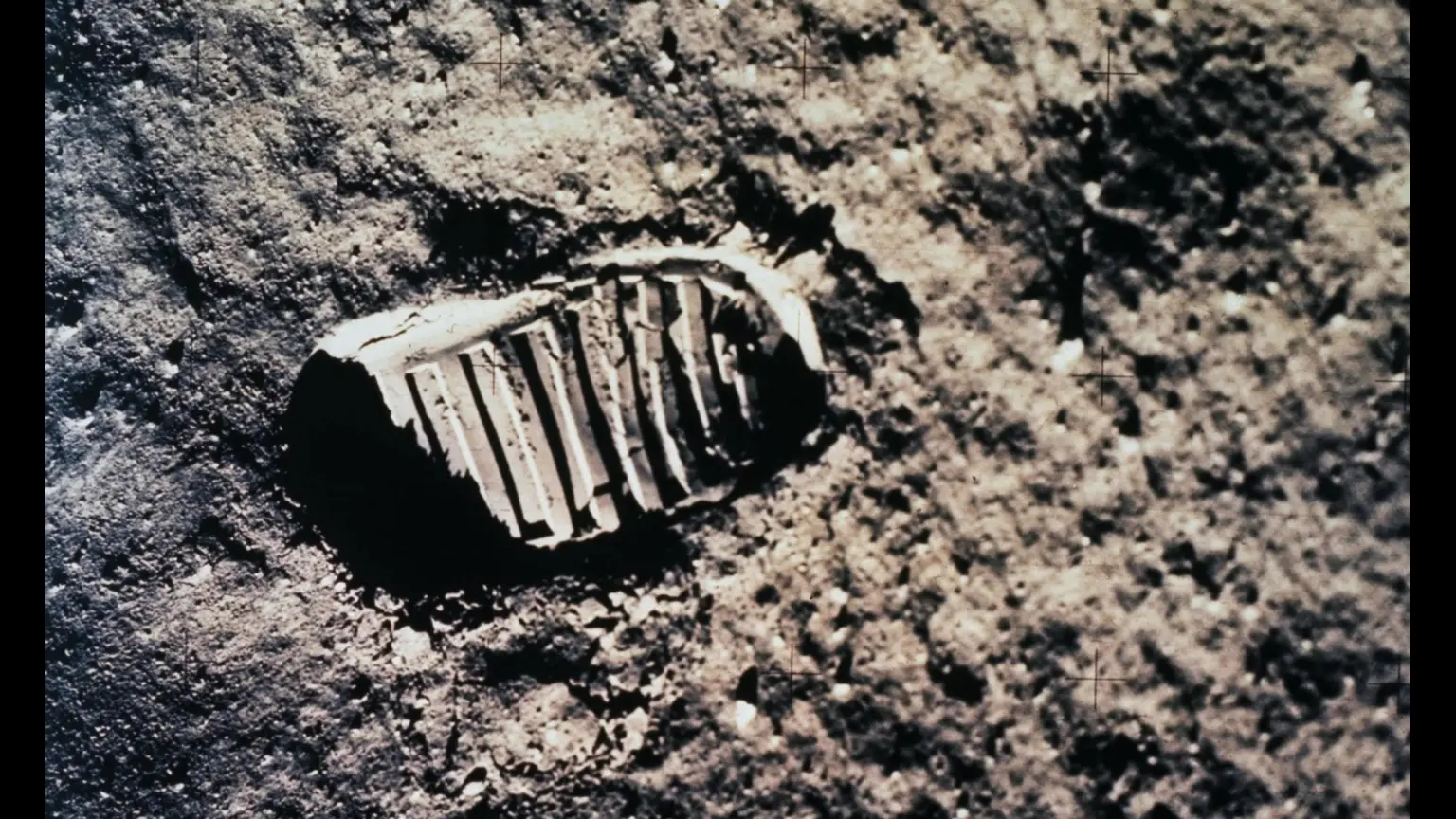
Over 50 years since humans last walked on the Moon, astronaut footprints and rover tracks are still visible. But they won’t last forever.
- Some of the most iconic images from the Apollo program in the late 1960s and early 1970s are of astronaut footprints left in the lunar soil.
- Today, lunar orbiters can still see their footpaths and rover tracks, seemingly unblemished in all the time since, as pristine as they were when they were first made.
- But even though it has virtually no atmosphere, these footprints will eventually disappear over time. Here’s the science of how it’s happening, and how long it will take.
When humans visited the Moon for the first (and, to date, only) times in the late 1960s and early 1970s as part of the Apollo program, we didn’t just bring photos and samples back with us, but also left behind undisputable evidence of our onetime presence there. In addition to scientific and exploration equipment, such as lunar retroreflectors, lunar rovers, seismometers and more, we left our imprint on the Moon in a wholly different fashion: in the form of footprints, footpaths, and rover tracks. The visual evidence of our presence there can still be seen from modern lunar orbiters, and appears virtually unchanged from the moments they were first created.
But will those footprints last forever, or on long enough timescales, will even they disappear? That’s what Mark Schultz wants to know, writing in to ask:
“Many people believe those footprints will exist for millions of years. My personal take is that they will degrade relatively quickly. Let me offer several causes for those footprints degrading… [Impacts, moonquakes, thermal expansion/contraction, static electricity, solar events, solar and cosmic radiation, etc.] Long story short, based on all effects mentioned, it seems to me that footprint degradation should happen on shorter time scales rather than longer.”
There’s no doubt that these footprints won’t be eternal. But how long they last depends on how important each of these effects are. Let’s look at the scientific details and find out!
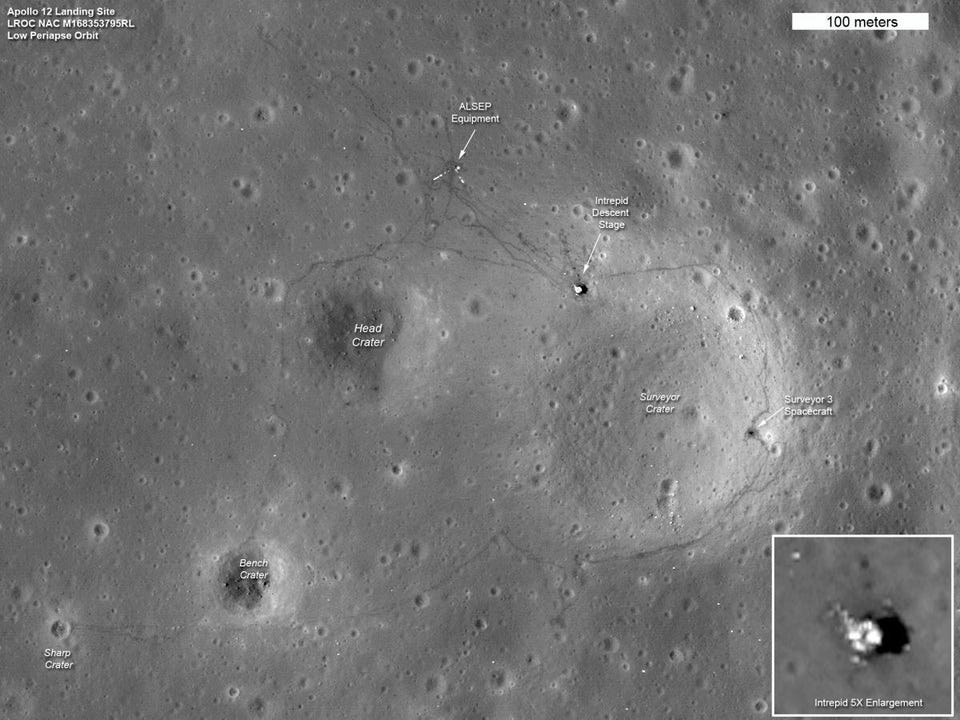
It’s important, if you want to know what effects arise from a variety of sources, to be quantitative: to determine the amount of impact that each source you’re considering has. Only by answering the key questions of:
- how much of an effect do these events have,
- how frequent are they,
- and how do the various events compare to one another,
can we begin to answer a question like, “how long will it (likely) be before these features are no longer present on the lunar surface?”
Although there are many ways to look at the problem, I think the most straightforward approach is to consider the three ways that these footprints, footpaths and rover tracks could potentially be erased.
- They could be violently obliterated, either a little at a time or all-at-once, by energetic collisions that occur from external (non-lunar) sources.
- They could be erased, etch-a-sketch style, from a shaking, vibrating, or other surface rearrangement of the particles on the lunar surface.
- Or they could be gradually covered over by some form of precipitation, like the raining-down of atmospheric particles.
By breaking things up into these general categories, we can consider many of the plausible effects all grouped together, instead of playing whack-a-mole individually.
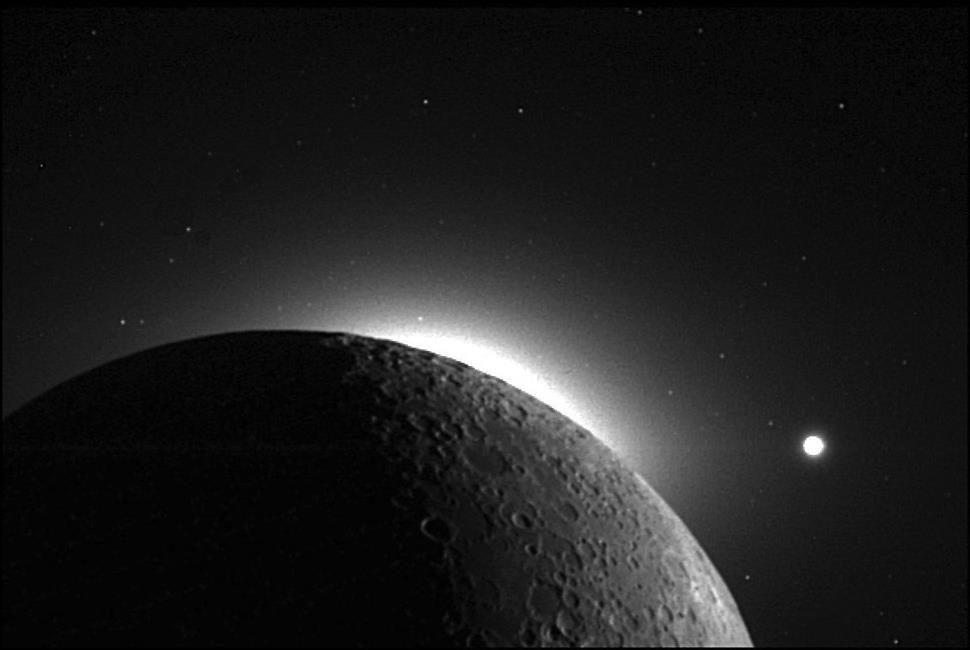
Violent obliteration
Even though the Moon is located in space, far away from Earth, that doesn’t mean, in any way, that it’s safe from the cosmic maelstrom swirling within our galaxy. We have, all at once:
- tiny dust grain particles traveling through the Solar System,
- hazardous rocky bodies (like asteroids) and ice-rich bodies (like comets),
- cosmic ray particles,
- and particles emitted by the Sun,
- as well as radiation.
We can see, from the heavily-cratered lunar surface, that earlier on in our Solar System’s history, violent impacts were more common, as were larger impacts. The fact that we see fewer craters in the (younger) lunar maria — the dark regions that were filled in with lava flows that didn’t cover the lunar highlands — as well as “smaller craters superimposed atop older, larger craters” tells us that the impact rate on the Moon has been decreasing with time, and that it’s especially the larger impacts that are extremely rare at modern times.
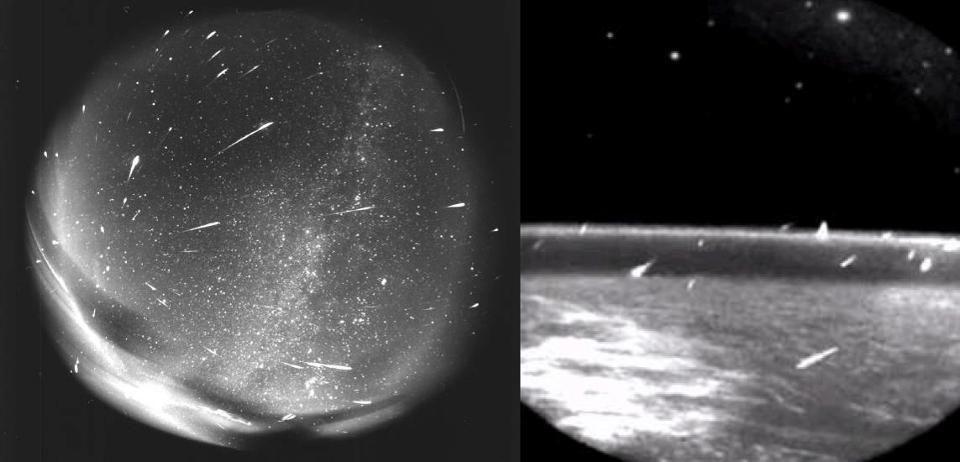
Here on Earth, we’re well aware that around 33 metric tons (about 73,000 pounds) of material, almost exclusively in the form of meteroids, strike our planet on a daily basis. This rate increases when planet Earth passes through the debris stream of a comet or asteroid: the cause of every known meteor shower that occurs on our world, but 33 metric tons a day is approximately what we experience as a long-term average.
The Moon has a little bit of an advantage over Earth: it’s physically smaller, and that makes it a smaller target for these strikes. Assuming that the relative geometry of the Earth and Moon is the only important factor, we’d expect for the Moon to get hit at about 7.5% the rate that Earth gets hit, with no particular preference for direction or location of these impacts. That works out to about 2460 kilograms (5430 pounds) of meteoroid material striking the Moon on a daily basis. (Although some studies claim a much lower number.)
This is fast-moving material, with the slower meteoroids traveling at about 20,000 m/s (45,000 mph) and the faster ones reaching speeds of ~72,000 m/s (160,000 mph). Remember, whenever a collision occurs, more energy leads to a more devastating impact, with kinetic energy being linearly proportional to mass but being proportional to the impact speed squared.
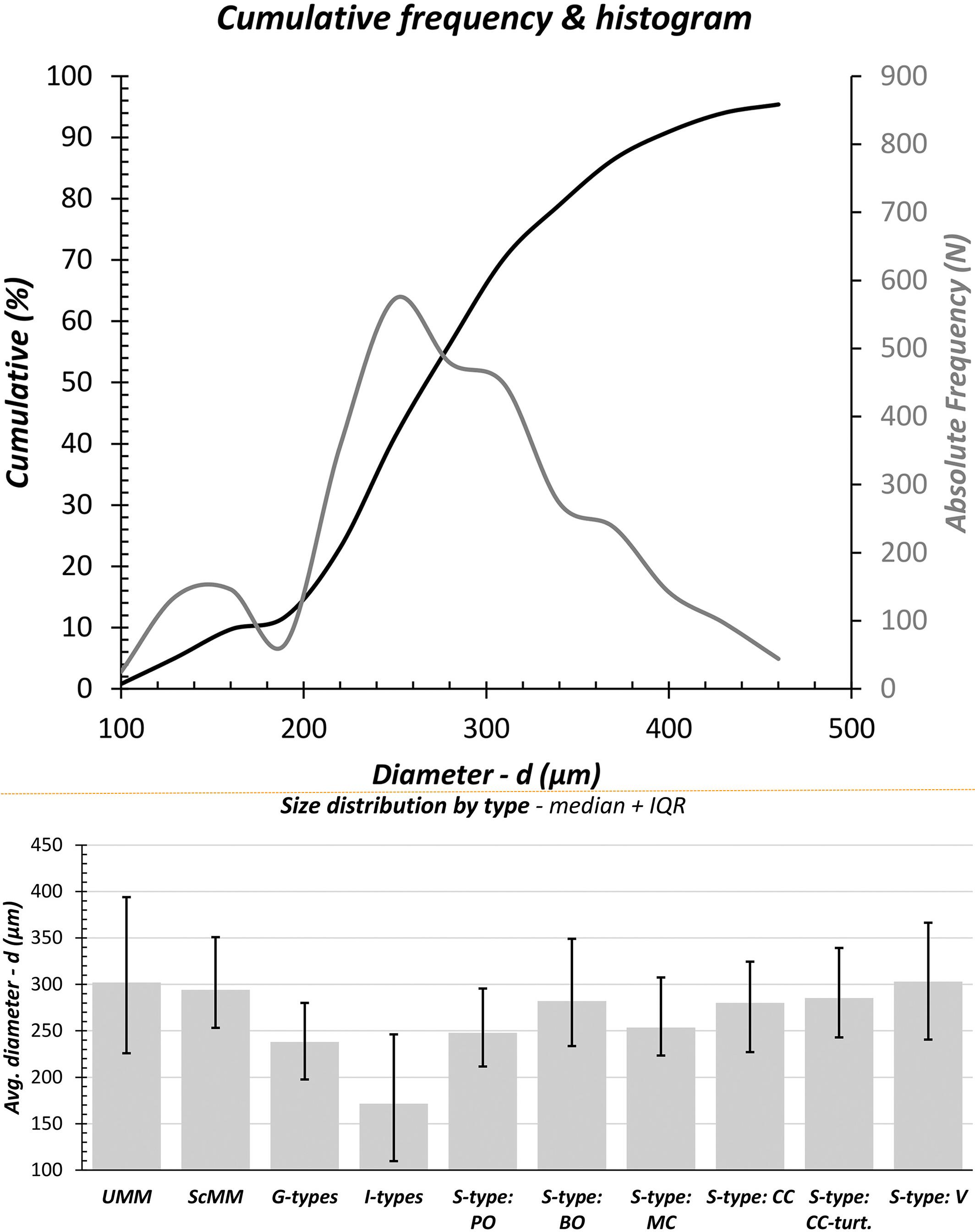
This is fearsome, in a sense. If even a 5 kilogram (11 pound) meteoroid strikes the Moon, it would excavate a ~9 meter (30 foot) crater, kicking up some 75,000 kg (165,000 pounds) of lunar material above the Moon’s surface. However, as you can see from the figures above, taken from a 2020 study of meteoroids found on Earth, almost all of the meteoroids that we know of are small, sub-millimeter sized objects. Even with such large numbers of them striking the Moon each year — several trillions of these miniature impacts — the surface area of the Moon is a fantastic 38 million square kilometers: nearly the size of Asia.
These particles are mostly less than 0.0001 grams in mass, and although each impact can excavate ~1000 times as much mass as the impactor from the lunar surface, it would take anywhere from 4 million to 100 million of years for these micrometeoroid impacts to erase a typical ~1 cm-deep footprint or rover track from a random location on the Moon. More massive impacts are too few in number or frequency to have anything other than a negligible effect. This is definitely suggestive that these footprints will persist for millions of years, at least, based on impacts alone.
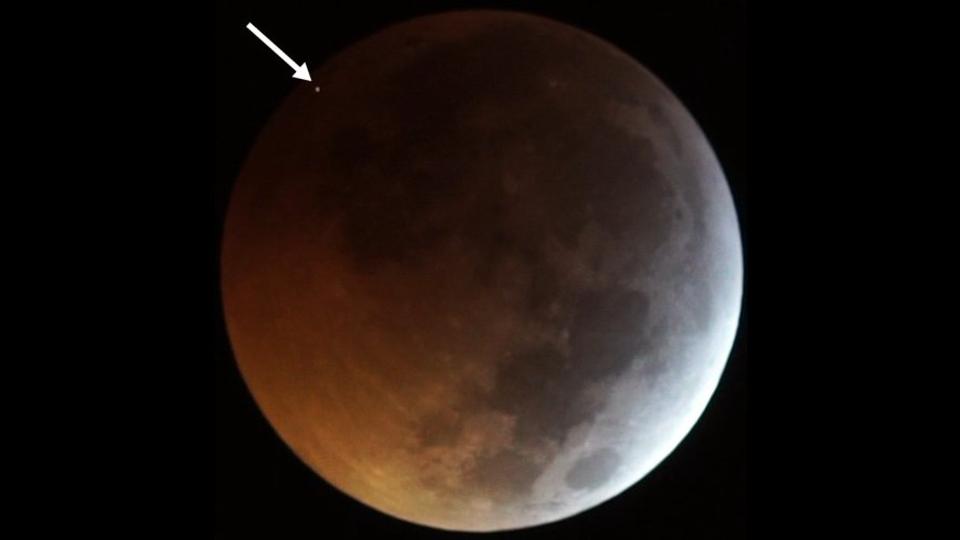
What about other impactful events?
On a particle-based level, there are also solar particles arising from the solar wind, solar flares, and coronal mass ejections. There’s radiation, or photons of various energies, that come from the Sun. There are cosmic backgrounds of radiation at all wavelengths, from gamma-rays to radio waves, that strike every object in space. And there are also cosmic particles known as cosmic rays, also with a wide variety of energies, that strike every object as well, including the Moon.
What effect do these impacts have?
If the Moon were rich in light, volatile elements and compounds — hydrogen, methane, ammonia, water, etc. — the effects would be substantial, as they would impart enough energy to give them high-velocity kicks, sending them into orbit around the Moon and even enabling them to escape from the Moon’s gravity entirely.
Wherever the Moon receives direct sunlight, those volatiles were already been boiled off and sublimated away long ago. But, if we combine the effects of these sources of radiation and wind with the aforementioned impacts, they can, indeed, do something fascinating to the Moon: create a “tail” made of sodium ions!
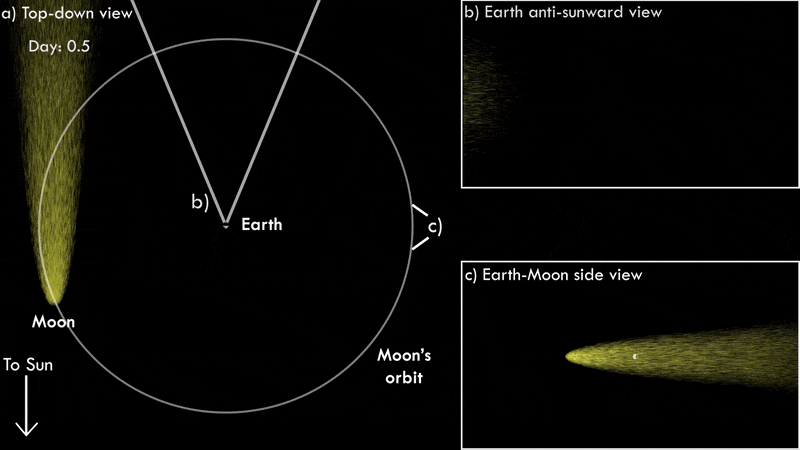
The most abundant elements in the very topmost layer of the Moon’s soil are oxygen, sodium, magnesium, aluminum, silicon, calcium, titanium, and iron. When impacts occur, they kick all of these elements up, and then when direct sunlight shines on them, sodium — an example of what’s chemically known as an alkali metal — will easily lose its outermost (valence) electron. Unlike the other light elements, which hold onto their electrons more tightly, easily-ionized sodium can then be accelerated by the solar wind. When a solar flare or a coronal mass ejection occurs, this tail can grow significantly in magnitude.
This sodium tail is always present, but is difficult to observe from Earth, with the exception of during a new Moon. When a meteor shower occurs, more impacts happen on the Moon, and when that coincides with a solar flare or a coronal mass ejection, the sodium tail can intensify to be up to ~20 times brighter than at normal levels.
The sodium moon tail also teaches us, as a corollary, that it really is the smallest impacts, as opposed to the larger, less frequent ones, that create the overwhelming majority of the Moon’s atmosphere.
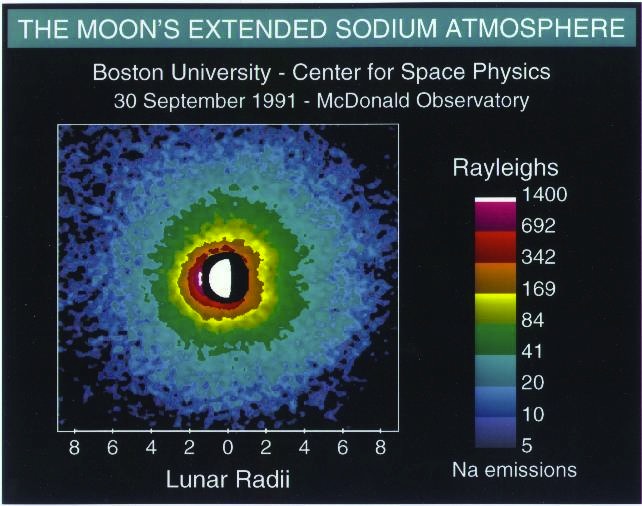
What about the lunar atmosphere precipitating down?
Here on Earth, at sea level, the average density of our atmosphere is about 1019 molecules per cubic centimeter. On the Moon, the average density is a factor of 10 trillion smaller, with only one million molecules or atoms per cubic centimeter. The Apollo rockets, when they took off from the Moon, increased the lunar atmospheric density by about 20%, indicating how lightly-held the surface layer of the Moon is.
Unfortunately, most of those particles are noble gases, and will not precipitate down onto the surface. It’s only the kicked-up debris that will do so. Although, just as impacts and meteor showers increase the concentration of the lunar atmosphere, it’s possible that continued exploration of the Moon — including with humans, rovers, landers, and return rockets — will accelerate the rate at which features on the Moon, including footprints, footpaths, and rover tracks, gradually disappear from the surface. Just one Artemis-like mission each year, landing on and then taking off from the Moon, could potentially reduce the amount of time that these human-created features on the Moon persist: from millions down to hundreds of thousands or even tens of thousands of years.
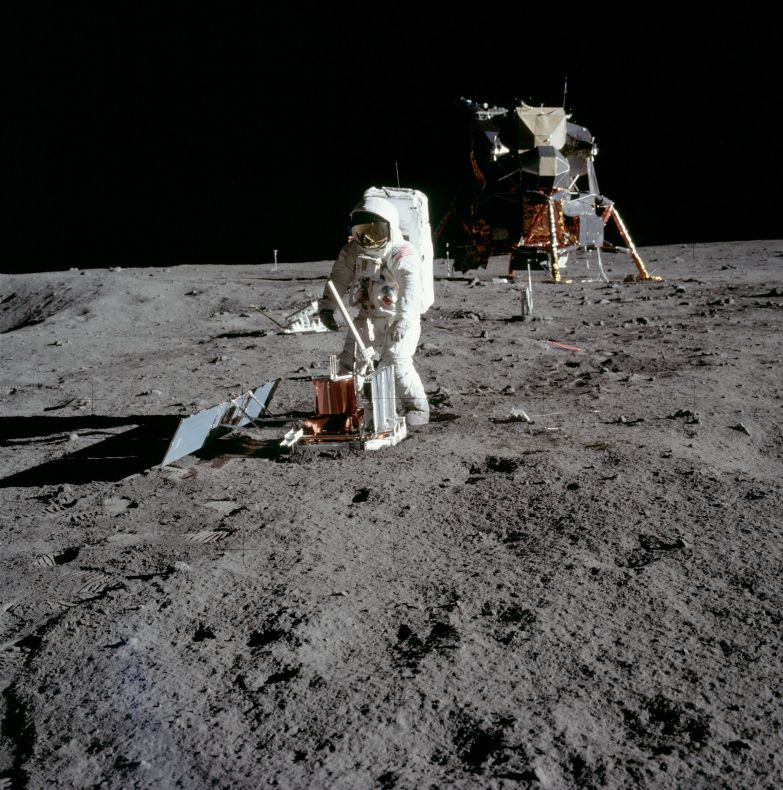
Lastly, what about lunar seismic events?
This, perhaps surprisingly, is the greatest long-term unknown. Since we installed a network of seismometers on the Moon back during the Apollo era, we discovered that there are, at least, four different types of moonquake:
- deep moonquakes, whose epicenter was at least 700 km deep, likely caused by Earth-induced tides,
- surface vibrations, likely caused by the impact of meteorites,
- thermal quakes, caused by the expansion and contraction of the Moon during its day/night cycle,
- and shallow moonquakes, occurring with epicenters ~20 or 30 kilometers below the surface.
The first three types of moonquake are negligibly small on the seismic (Richter) scale: mild, harmless, and unable to rearrange particles on the lunar surface.
But the shallow moonquakes have registered up to 5.5 on the Richter scale, containing thousands of times as much power as all the other types of moonquakes combined. Unlike on Earth, where even the most powerful earthquakes cease shaking after ~2 minutes, these shallow moonquakes persist for more than 10 minutes apiece. These represent the greatest unknowns to the longevity of astronaut footprints, footpaths, and rover tracks, as a long, powerful earthquake whose epicenter lies just beneath one of those features could shake them out of existence.
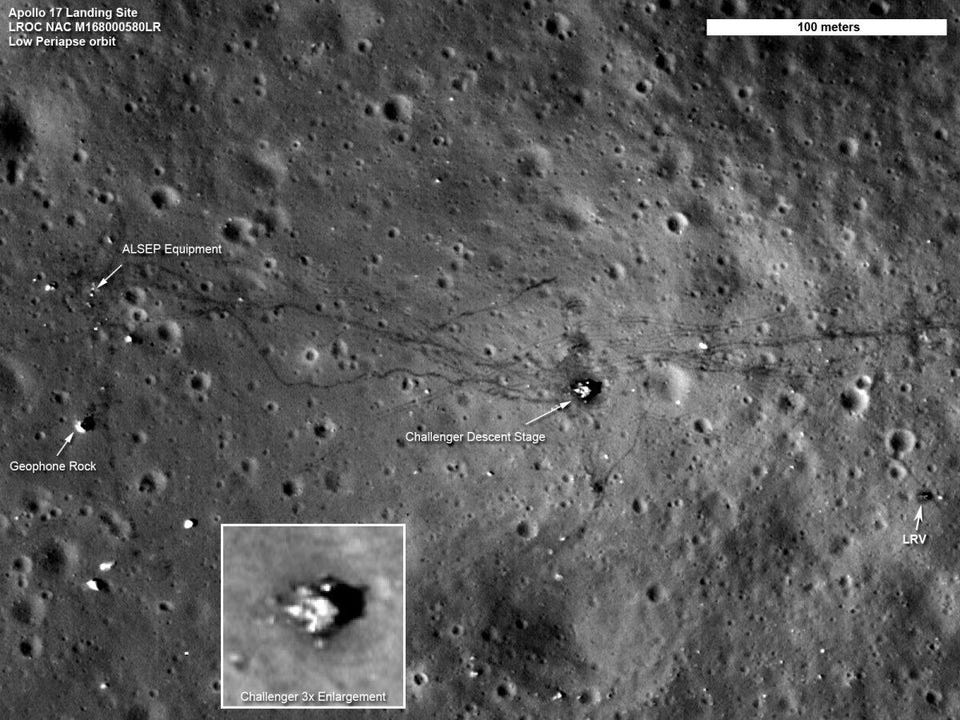
During its ~8 year lifetime, the Apollo seismic network saw 28 of these high-magnitude, shallow moonquake events. Recent studies indicate that the Moon itself is quite active, perhaps even with active faults. Over the past few hundred million years, the Moon has shrunk by about 50 meters (160 feet) as its interior cools, breaking, faulting, and rearranging the lunar crust.
Still, one of the large-magnitude moonquake epicenters that was reconstructed occurred just 13 kilometers (8 miles) from the Apollo 17 landing site, and yet the astronaut footpaths and lunar vehicle tracks from that mission remain unscathed.
To the best of our knowledge, the disturbances made by humans in the lunar soil really will persist for millions of years in most locations, with only the rare large impact or large, properly-situated moonquake erasing those features. The settling of impact debris, the presence of cosmic rays, solar phenomena, and space weather, and the variations in night/day thermal properties of the Moon all have negligible effects on the lunar surface as a whole. However, there’s a little bit of wiggle room left when it comes to shallow moonquakes, and there’s the big question of how increased human activity on the Moon might hasten the erasure of these classic features.
It’s the most dominant effects that will determine how long these surface features on the Moon persist for, and if the impacts that truly dominate — as the present evidence indicates — then these footprints really will persist for millions of years.
Send in your Ask Ethan questions to startswithabang at gmail dot com!
